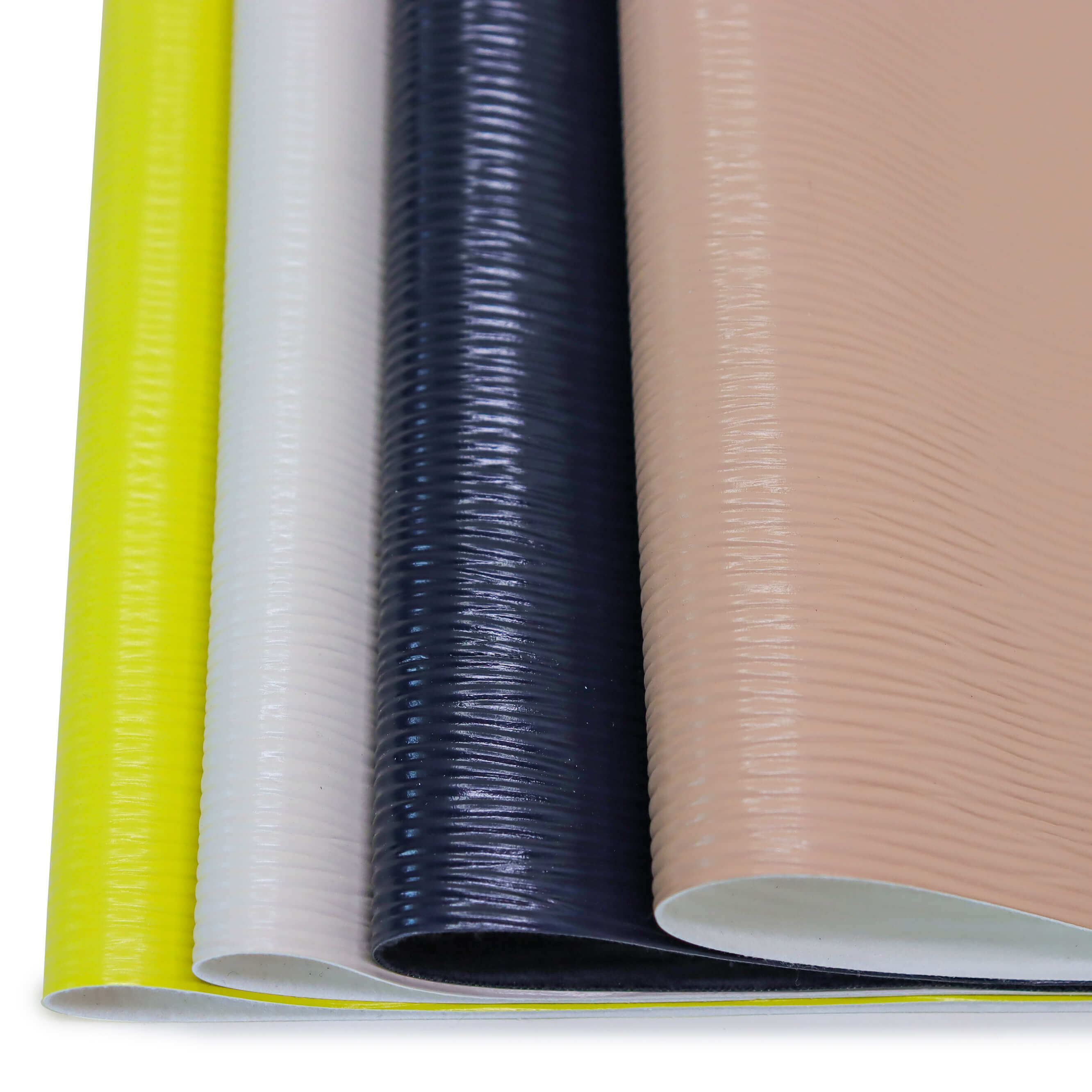Email format error
Email cannot be empty
Email already exists
6-20 characters(letters plus numbers only)
The password is inconsistent
Email format error
Email cannot be empty
Email does not exist
6-20 characters(letters plus numbers only)
The password is inconsistent

News

PVC vs. PU Leather: The Ultimate Material Showdown
When it comes to choosing materials for fashion, upholstery, or even automotive interiors, the debate between PVC and PU leather often takes center stage. Both are synthetic alternatives to natural leather, but they differ significantly in terms of properties, sustainability, and application suitability. In this comprehensive blog post, we'll explore the nuances of PVC and PU leather, diving into their characteristics, uses, and the factors that might sway your decision one way or the other.
Introduction: The Synthetic Leather Spectrum
In a world where sustainability and ethical considerations are increasingly important, the choice between PVC and PU leather is more than just a matter of aesthetics. It's a decision that can impact the environment, the durability of your products, and the comfort of your customers. Let's kick off with a captivating fact: did you know that the global market for synthetic leather is projected to grow at a CAGR of over 5%, largely fueled by the demand for vegan and eco-friendly products? This statistic sets the stage for a material showdown that's not just about quality but also about the future of the industry.
Understanding PVC Leather
PVC, or polyvinyl chloride, is one of the most widely used plastics in the world. When it comes to leather alternatives, PVC has been a frontrunner for decades.
Properties of PVC Leather
- Durability: PVC is known for its toughness and resistance to wear and tear.
- Water Resistance: It performs well in wet conditions and is often used for outdoor applications.
- Cost-Effectiveness: PVC is generally less expensive to produce than PU, making it a popular choice for budget-friendly products.
Environmental Concerns
- Recyclability: PVC is harder to recycle due to the variety of additives used in its production.
- Toxicity: The production and disposal of PVC can release harmful chemicals into the environment.
Enter the PU Leather
PU, or polyurethane, is a relative newcomer compared to PVC but has quickly gained traction for its versatility and performance.
Properties of PU Leather
- Softness and Flexibility: PU leather is often praised for its soft, supple feel that closely resembles natural leather.
- Breathability: It tends to be more breathable, making it comfortable for clothing and accessories that require close contact with the skin.
- Eco-Friendly Options: There are water-based PU options that are more environmentally friendly than traditional solvent-based PU.
Environmental Considerations
- Recyclability: PU is generally easier to recycle, although the process is not without its challenges.
- Innovation: There's ongoing research into making PU leather more sustainable, including the development of bio-based polyurethanes.
Application and Suitability
The choice between PVC and PU leather often comes down to the intended application of the final product.
Fashion and Accessories
- PU Leather: Due to its softness and more natural leather-like feel, PU is often the preferred choice for clothing, bags, and shoes.
- PVC Leather: Its durability and water resistance make it suitable for outdoor gear and items that require a more rigid structure.
Automotive and Upholstery
- PVC Leather: Its ease of cleaning and maintenance makes PVC a popular choice for car interiors and public seating.
- PU Leather: It's often used in high-end vehicles and home furniture for its luxurious feel and appearance.
Durability and Longevity
While PVC leather is known for its durability, PU leather, especially when treated with the right coatings, can also offer excellent longevity. The key is to choose a product that's been manufactured with quality in mind, regardless of the material.
Sustainability and the Future
As consumers become more aware of the environmental impact of their choices, the demand for sustainable materials is on the rise. This has led to significant advancements in the development of eco-friendly PU leathers and a reevaluation of PVC's role in the industry.
Conclusion: The Choice is Yours
In the battle of PVC vs. PU leather, there's no one-size-fits-all answer. The choice depends on a variety of factors, including the intended use of the product, budget considerations, and personal values regarding sustainability and ethics. As the world continues to evolve, so too will the materials we choose to create with. The future of synthetic leather is bright, with ongoing innovation promising a more sustainable and high-performing alternative to natural leather.
Whether you're a fashion designer, a product developer, or a consumer, understanding the differences between PVC and PU leather is the first step in making an informed decision. The next time you reach for a synthetic leather product, you'll be equipped with the knowledge to choose the material that best fits your needs and values.

